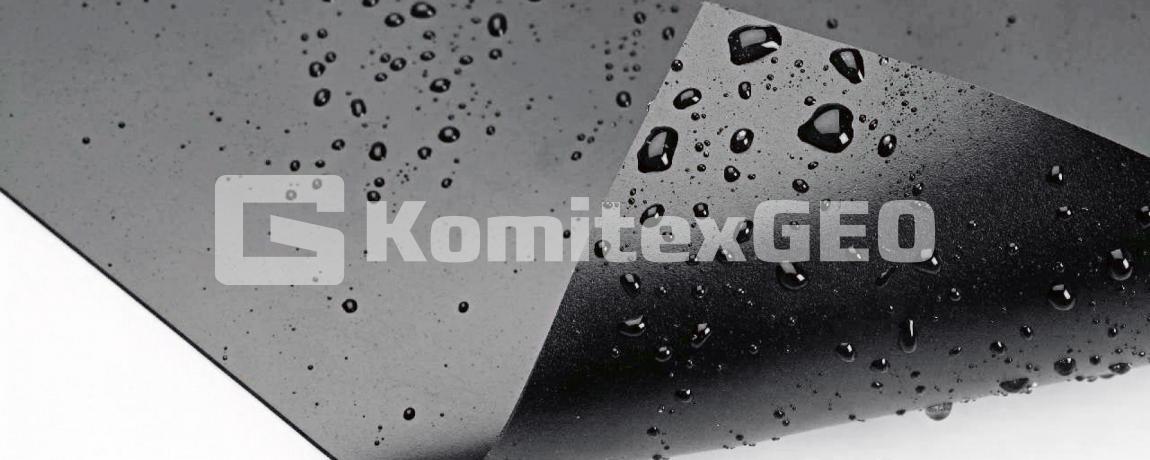The geomembrane (waterproofing membrane) is a geosynthetic material(in rolls), manufactured from polyethylene, with additives: carbon black, stabilizers and antioxidant. The additives used in the production of a waterproofing geomembrane, add to the material unique physical and chemical properties, which exceed the properties of traditional waterproofing materials.
TYPES OF GEOMEMBRANE
Geomembranes can be manufactured from high-density polyethylene of low pressure (HDPE-geomembrane) and high-pressure low-density polyethylene (LDPE-geomembrane). HDPE geomembrane is notable by its increased strength (puncture resistance), though it is less flexible than LDPE geomembrane. The choice of the geomembrane type is normally made, depending on the application of the material. HDPE-geomembrane is applied at projects, that require materials with increased resistance, while LDPE-geomembrane is a perfect solution for the projects related to collapsible soil and waterproofing of complex-shaped surfaces. The usage of HDPE geomembrane as a waterproofing material for private artificial reservoirs allows to increase its service life and avoid repairs. Geomembrane can be smooth or textured. The smooth (flat) geomembrane has weak bonding with soil surfaces, therefore the textured geomembrane is recommended on slopes. Textured geomembrane, thanks to its structure, is capable to provide not only waterproofing, but also drainage functions.
FUNCTIONS
- Waterproofing of horizontal surfaces;
- Waterproofing and reinforcement of slopes;
- Anti-erosion protection;
- Waterproofing of ponds (liners for ponds);
- Strengthening of roadsides in bottom lands;
- Load distribution;
- Organisation of foundations;
- Surface Protection from chemically aggressive environments
APPLICATION
- It is used by the industrial enterprises for prevention of leak of toxic liquids and filtrates;
- In municipal services the geomembrane is used for construction of sewage treatment plants and reservoirs with a potable water;
- In agriculture the geomembrane is used for isolation of the infected soil;
- The geomembrane (a liner for a pond) is applied for waterproofing of ponds and reservoirs. The waterproofing of ponds is necessary for protection against formation of silt, water leak, etc.
ADVANTAGES
- The polymeric membrane does not need special storage conditions;
- UV-resistant;
- Resistant to puncture and tear-resistant;
- Does not lose its properties at temperature variations;
- Does not decay and does not inflate;
- Fast production;
- Easy installation;
- Geomembrane is non-toxical , absolutely safe and does not cause any environmental damage, ;
- Waterproofing geomembrane keeps its physical and chemical properties in course of time and its durabilty exceeds 50 years;
- Usage of a polymeric membrane allows to reduce costs for maintenance:
- Ability to give any form to an artificial reservoir;
- Excludes blossoming of water.


